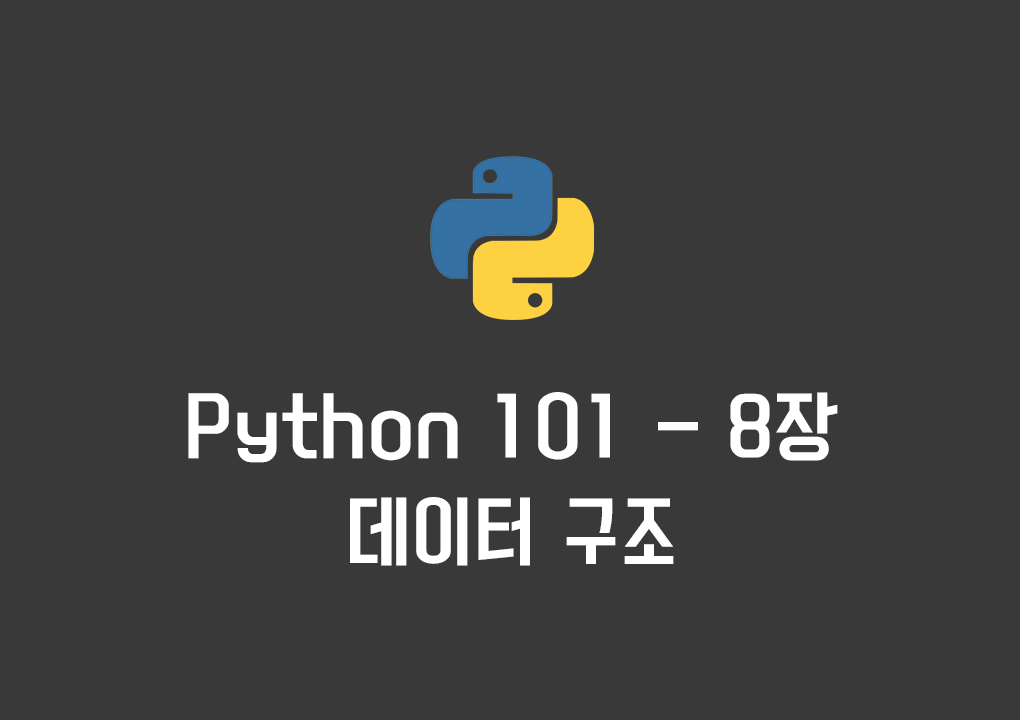
데이터 구조
데이터 구조란 데이터를 효율적으로 나타내기 위한 특정 데이터 타입을 말한다. list(), tuple(), dict(), set() 등 많음
리스트(List; list())
- 여러 데이터를 순서대로 나열한 데이터 구조이다.
- 리스트는 변형 가능한(muttable) 데이터 구조임
- 다른 언어의 배열과 비슷하지만 다름
- 리스트의 원소는 같은 타입일 필요는 없다.
- 0 ~ length – 1의 인덱스로 접근 가능하다. ex)
list_name[index] list1 + list2는list1뒤에list2가 붙은 리스트가 리턴 된다.
메소드
list.append(value):list의 맨 뒤에value원소를 추가한다.list.insert(index, value):list[index]에value를 넣고 원래 있던 원소들을 뒤로 민다.list.index(x[, start[, end]]):list에 있는 원소 중x와 같은 값을 가지고 있는 항목 중 가장 첫번째 인덱스를 리턴한다.start와end인수를 사용하여 찾는 범위를 지정할 수 있다.list.pop([i]):list의i번째 값을 삭제하고 그 값을 리턴한다.i를 지정하지 않으면 가장 마지막 값을 삭제하고 리턴한다.list.reverse():list를 역순으로 변경한다.
_list = [1, 2, 3]
_list.append(12) # [1, 2, 3, 12]
_list.insert(1, 6) # 첫번째가 아닌 인덱스 1에 추가한다. [1, 6, 2, 3, 12]
k = _list.pop(0) # k == 12, _list == [6, 2, 3, 12]
_list.reverse() # _list = [12, 3, 2, 6]
for i in _list:
print(i, end=' ')
# 12 3 2 6튜플(Tuple; tuple())
- 튜플은 변형 불가능한(immutable) 데이터 구조다. -> 수정할 수 없음
- 리스트와 비슷하게 여러 데이터를 순서대로 나열한 데이터 구조이다.
- 리스트의 원소는 같은 타입일 필요는 없다.
- 인덱스로 접근 가능하다.
메소드
tuple.count(value):tuple안에서value의 개수를 구함tuple.index(i):tuple의i번째 인덱스 값을 리턴함
t = tuple()
t = (1, 4, 2, 5, 1)
t.append(1) # AttributeError: 'tuple' object has no attribute 'append'
t.count(1) # 파라미터 value의 개수를 구함 -> 2
t.index(2) # 3
for i in t:
print(i, end=' ')
# 1 4 2 5 1딕셔너리(Dictionary; dict())
- key-value로 연결 되어 있는 데이터 구조이다.
dict_name[key]로 value값을 조회 가능하다.- key 값은
string,int,float이 들어갈 수 있다. for문으로 iterable 하게 조회 가능하다.- key는 중복될 수 없다.
메소드
clear(): 딕셔너리 객체를 비움 (dic = {}와 같음)copy(): 딕셔너리 객체를 복사함 (dic = dic[:]와 같음)get(key): 딕셔너리에서 key라는 키의 value를 리턴함 (dic[key]와 같음)items(): 각 (key, value) 형태의 튜플의 리스트를 리턴함keys(): 딕셔너리 안에 있는 key들을 리스트 형태로 리턴함pop(i): 인덱스 i의 값을 삭제하고 리턴함values(): 딕셔너리 안에 있는 value들을 리스트 형태로 리턴함
dic = {1 : 3, 2 : 14, "ite" : "val"}
d = dic.copy()
print(d) # {1 : 3, 2 : 14, "ite" : "val"}
d.clear()
print(d) # {}
print(dic.get("ite")) # "val"
print(dic.keys()) # dict_key([1, 2, "ite"])
print(dic.values()) # dict_values([3, 14, "val"])
for i in dic:
print(i, dic[i]) # i는 key, dic[i]는 key i에 대한 value가 리턴됨